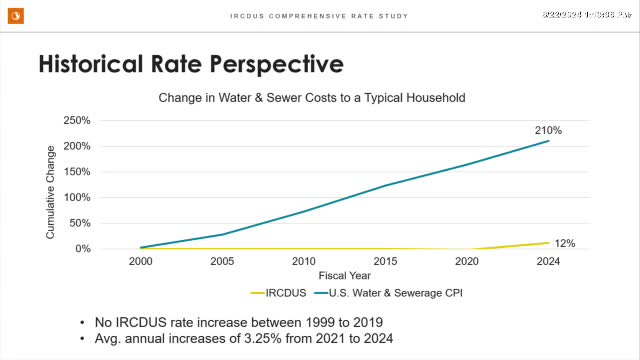Utility rates face drastic changes amid rising costs
August 22, 2024 | Indian River County, Florida
This article was created by AI summarizing key points discussed. AI makes mistakes, so for full details and context, please refer to the video of the full meeting. Please report any errors so we can fix them. Report an error »

In a recent government meeting, officials discussed the pressing financial challenges facing local water and sewer services, exacerbated by the pandemic's impact on construction and operational costs. Over the past three years, expenses for essential materials, such as chemicals and electricity, have surged by 43%, while the costs of capital projects have more than doubled. This inflationary pressure has led to a significant strain on budgets, prompting a reevaluation of utility rates.
The meeting highlighted that while Barefoot Bay currently enjoys one of the lowest combined water and sewer bills in the region at $50.67 for a typical household, the sustainability of this pricing structure is under threat. Officials presented a detailed analysis indicating that without adjustments to rates, the utility system could face a negative cash flow as early as 2026, with reserves potentially depleted by 2027.
To address these financial concerns, the proposed plan includes a series of rate increases over the next two years, aimed at aligning revenues with rising operational and capital costs. The analysis revealed a structural imbalance in the budget, with current rates insufficient to cover both operating expenses and necessary capital improvements. The plan also emphasizes the importance of maintaining adequate reserves to manage unforeseen challenges and ensure long-term financial stability.
Officials underscored the need for a balanced approach to rate increases, taking into account the differing costs of water and sewer services. The proposed adjustments aim to ensure that the utility can continue to provide reliable service while preparing for future growth and infrastructure needs. The meeting concluded with a commitment to transparency and ongoing communication with the community as these changes are implemented.
The meeting highlighted that while Barefoot Bay currently enjoys one of the lowest combined water and sewer bills in the region at $50.67 for a typical household, the sustainability of this pricing structure is under threat. Officials presented a detailed analysis indicating that without adjustments to rates, the utility system could face a negative cash flow as early as 2026, with reserves potentially depleted by 2027.
To address these financial concerns, the proposed plan includes a series of rate increases over the next two years, aimed at aligning revenues with rising operational and capital costs. The analysis revealed a structural imbalance in the budget, with current rates insufficient to cover both operating expenses and necessary capital improvements. The plan also emphasizes the importance of maintaining adequate reserves to manage unforeseen challenges and ensure long-term financial stability.
Officials underscored the need for a balanced approach to rate increases, taking into account the differing costs of water and sewer services. The proposed adjustments aim to ensure that the utility can continue to provide reliable service while preparing for future growth and infrastructure needs. The meeting concluded with a commitment to transparency and ongoing communication with the community as these changes are implemented.
View full meeting
This article is based on a recent meeting—watch the full video and explore the complete transcript for deeper insights into the discussion.
View full meeting